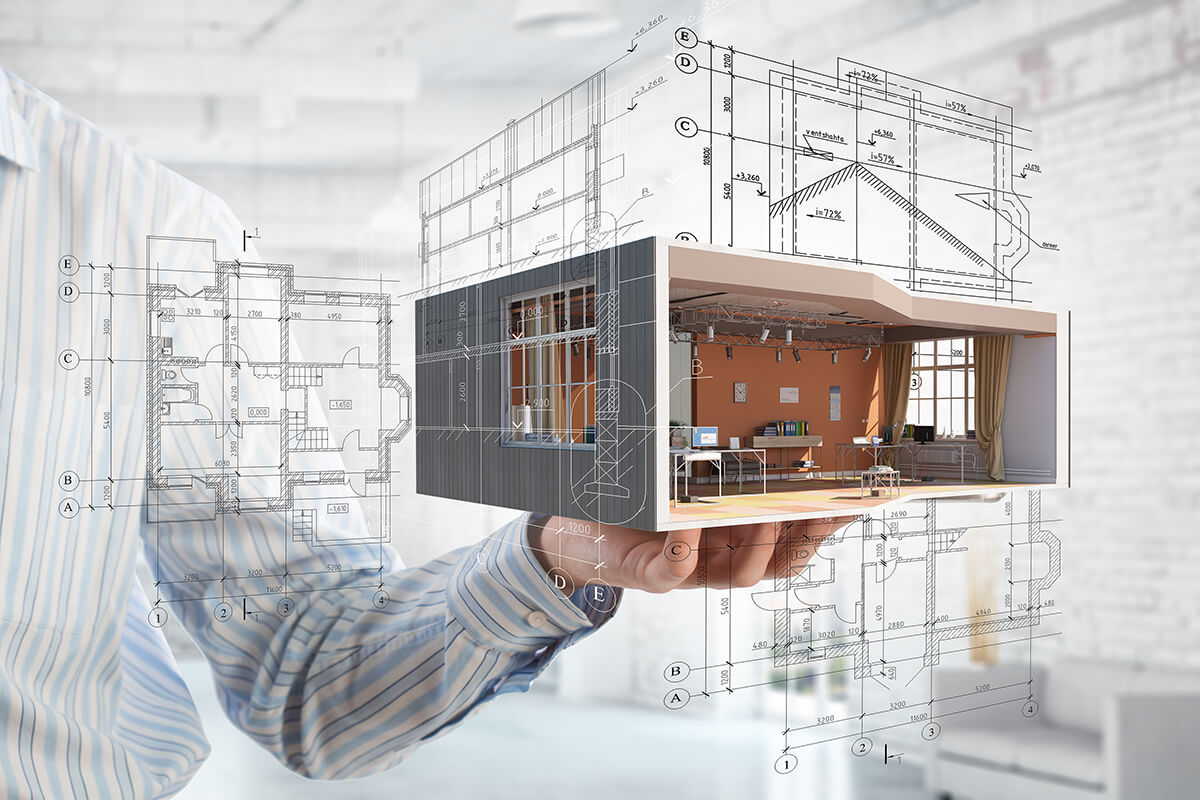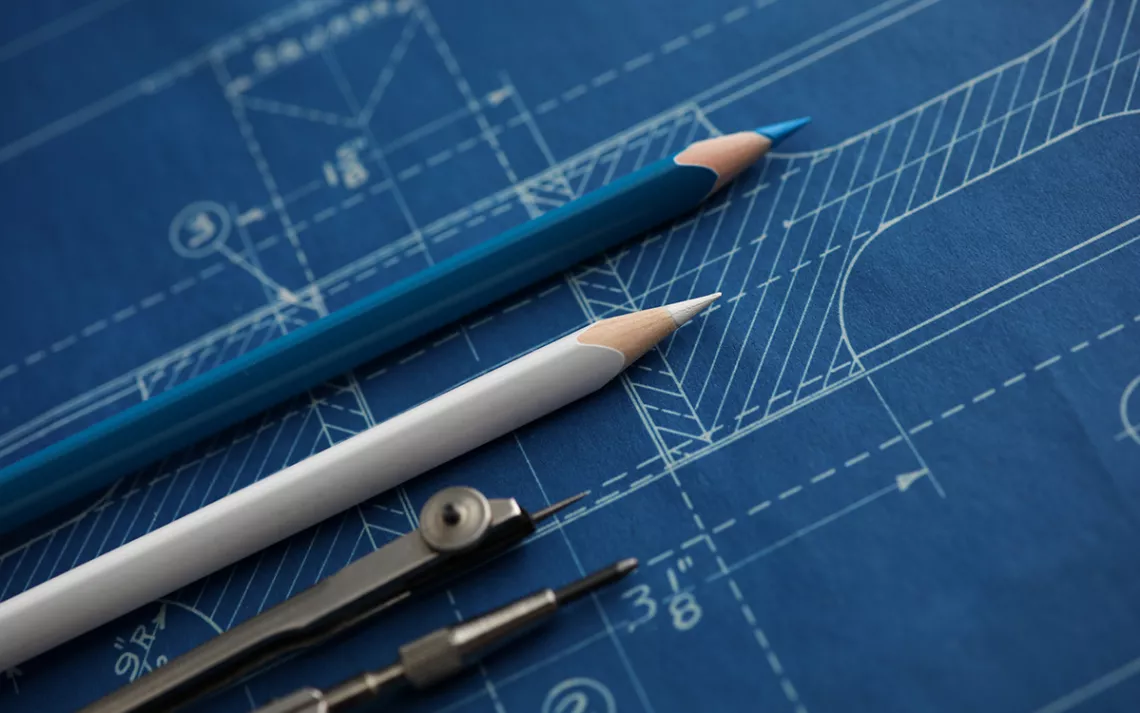Architect Checklist for Upcoming Commercial Projects
Architect Checklist for Upcoming Commercial Projects
Blog Article
Understanding the Diverse Job Paths Available for Aspiring Architect
As an ambitious Architect, you have a world of occupation paths waiting on you. Each path supplies special challenges and chances to use your imagination and technical knowledge. Whether you're drawn to standard style or the nuances of lasting style, there's a specific niche that straightens with your interests. Recognizing these diverse alternatives can shape your expert trip, but which direction will you select to discover first?
Standard Style: Creating Structures and Structures
Conventional design focuses on developing buildings and structures that blend functionality with aesthetic charm. Your styles can reflect cultural heritage, showcasing local customs while meeting contemporary requirements.
You'll develop abilities in composing, model-making, and website evaluation, enabling you to imagine and interact your ideas efficiently. Engaging with customers, you'll require to recognize their vision and convert it right into possible designs.
In addition, building codes and sustainability techniques are essential in your job, guaranteeing your structures are risk-free and environmentally friendly. As you grow in your job, you'll discover opportunities in residential, commercial, and even reconstruction jobs, each offering unique obstacles. Welcoming conventional architecture leads the way for a fulfilling profession that admires the past while shaping the future.
Urban Planning: Shaping Communities and Public Spaces
As a hopeful Architect, you can play a crucial duty as a city organizer, transforming just how communities work and interact. By utilizing area engagement approaches, you'll ensure that citizens have a voice fit their setting. Plus, integrating sustainable design concepts will certainly help produce rooms that not just fulfill today's requirements but additionally secure the future.
Role of Urban Planners
While numerous might consider engineers as the sole enthusiasts behind buildings, metropolitan planners play a crucial function in shaping the wider landscape of neighborhoods and public spaces. They examine land usage, zoning regulations, and area requires to create sustainable atmospheres that enhance lifestyle. By working together with different stakeholders, you'll aid design parks, transportation systems, and houses that advertise social interaction and accessibility. Urban planners additionally concentrate on environmental considerations, making sure that developments integrate eco-friendly spaces and assistance biodiversity. Your know-how in spatial layout and area dynamics allows you to visualize future development while protecting social heritage. In this critical role, you'll straight influence just how individuals experience their environments, making every project an opportunity for favorable change.
Community Engagement Approaches
Efficient area involvement strategies are important for city planners to assure that the voices of residents are listened to and valued in the planning process. To promote significant dialogue, you ought to focus on open online forums and workshops where community members can reveal their ideas and problems. Usage studies and social networks to get to a wider audience, ensuring varied point of views are included. Working together with neighborhood organizations can boost depend on and assist in deeper connections. It is essential to provide clear info concerning decision-making procedures and suggested tasks, enabling homeowners to really feel informed and empowered. By proactively listening and incorporating responses, you'll create spaces that reflect the area's needs, ultimately causing even more successful and lasting metropolitan environments. Accept transparency and continuous dialogue for enduring effect.
Sustainable Style Concepts
When creating city rooms, incorporating lasting layout concepts is important for creating settings that flourish both environmentally and socially. You must start by concentrating on power effectiveness, using products that reduce waste and advertise recycling. Think about incorporating environment-friendly rooms, like parks and yards, to enhance biodiversity and improve air high quality. Advertising walkability and public transportation can lessen dependence on vehicles, promoting a much healthier community.
Designing with water conservation in mind is also crucial-- consider rainfall gardens and permeable surface areas to manage stormwater. Entailing area participants throughout the preparation procedure guarantees that the spaces you develop satisfy their demands and encourage social communication. By welcoming these principles, you'll add to vibrant, lasting metropolitan landscapes that benefit everybody.

Landscape Architecture: Developing Lasting Outdoor Settings
As you discover landscape design, you'll discover vital style concepts that develop practical and stunning outside areas. Sustainable techniques play a crucial duty in making certain these atmospheres grow while reducing ecological effect. And also, you'll find a variety of profession chances that enable you to make a real distinction in just how people connect with nature.
Style Principles in Landscape
Comprehending design principles in landscape architecture is crucial for producing lasting exterior atmospheres that integrate with nature. You'll require to ponder components like scale, balance, and proportion to assure your layouts feel natural and welcoming. Including indigenous plants not only enhances biodiversity however additionally reduces water usage, making your landscape durable. Consider the circulation of room and exactly how people interact with it; pathways and seating locations need to welcome exploration and relaxation. Additionally, focus on seasonal modifications, making with materials that enhance the environments year-round (Architect). By focusing on sustainability and appearances, you can create outdoor spaces that improve the community and promote well-being. Welcoming these principles will set a solid foundation for your career in landscape architecture.
Sustainable Practices Summary
Lasting methods in landscape architecture not just concentrate on appearances however additionally focus on environmental wellness and resource conservation. You can develop spaces that promote soil health, such as utilizing natural products and practicing permaculture principles. Inevitably, these methods assure your styles benefit both individuals and the setting for years to come.
Career Opportunities Exploration
With a solid structure in lasting techniques, landscape architecture provides a selection of job courses that permit you to make a meaningful effect on the environment. You might work as a landscape designer, creating visually pleasing and practical exterior rooms, or concentrate on eco-friendly restoration, helping to revive damaged environments. Urban coordinators usually collaborate with landscape architects to create green rooms in city setups, improving city livability. If you're passionate about education, consider becoming a landscape style teacher, inspiring future generations. Furthermore, you may deal with nonprofits concentrated on ecological sustainability or involve in research study to introduce new practices. Each course not just shapes lovely atmospheres however also fosters a much healthier world for future generations.
Sustainable Style: Concentrating On Eco-Friendly Practices
As you discover your career in design, accepting environment-friendly practices can establish you apart in an affordable field. Lasting style focuses on creating buildings that decrease environmental influence while boosting owner wellness. By including renewable materials, energy-efficient systems, and sustainable structure techniques, you'll add to a greener future.
Begin by gaining understanding of green certifications like LEED or BREEAM, which can boost your qualifications. Consider exactly how all-natural light, ventilation, and thermal effectiveness can maximize design. Work together with designers and environmental experts to introduce solutions that reduce waste and save resources.
Don't fail to remember the relevance of area involvement-- engaging local stakeholders can motivate designs that harmonize with the environment. As clients progressively prioritize sustainability, your experience in eco-friendly practices will not only attract projects yet likewise meet your enthusiasm for liable design. Welcome this crucial aspect of the career, and view your occupation grow.
Historical Preservation: Safeguarding and Bring Back Cultural Heritage
While you begin on your architectural journey, consider the essential duty of historical preservation in maintaining our cultural heritage. This area concentrates on the security and reconstruction of substantial buildings, sites, and frameworks that inform the stories of our past. By engaging in historic conservation, you'll assist protect the architectural legacy that forms area identity.
As a historic conservation Architect, you'll evaluate historic importance and assess the problem of structures. You'll function closely with conservationists and chroniclers to guarantee genuine remediation strategies are employed. This job path permits you to blend creative thinking with research study, allowing you to develop remedies that respect original products and craftsmanship.
Your work not just adds to sustainability by reusing existing structures but additionally fosters a sense of satisfaction within communities. Welcoming this path will certainly aid you become a guardian of background, maintaining the stories and visual appeals that enhance our lives.
Inside Architecture: Enhancing Indoor Spaces
Historical conservation and indoor design both share a dedication to enhancing the developed setting, however they concentrate on different elements. While historical conservation stresses maintaining a framework's historic and social worth, indoor architecture nos in on optimizing interior rooms for capability and aesthetic appeals.
As an aspiring Architect, you'll find that indoor design enables you to blend imagination with technical abilities. You'll design spaces that not only look great however likewise advertise convenience and efficiency. This field involves understanding how light, color, and products connect you can try this out within a room, influencing state of mind and use.
You'll service numerous tasks, from household homes to business workplaces, making certain that each setting meets the needs of its residents. By prioritizing user experience, you can transform insides into inspiring and functional areas, making home a substantial effect on just how individuals engage with their surroundings. Embrace the opportunity to boost interior environments and form the method people function and live.
Industrial Layout: Combining Performance With Looks
Commercial design plays an important role in developing products that perfectly blend aesthetic appeals with functionality, ensuring that what you make use of everyday is not just visually enticing however also sensible. As a hopeful Architect, you can involve on your own in this field, concentrating on developing every little thing from furniture to consumer electronics. Your job includes recognizing individual needs, materials, and making processes, enabling you to create cutting-edge services that improve everyday experiences.
In commercial layout, you'll usually work together with manufacturers, designers, and marketing experts, ensuring that your styles are not only attractive but additionally feasible. You'll discover to stabilize kind and feature, prioritizing usability without compromising design. By sharpening your skills in sketching, 3D modeling, and prototyping, you'll be well-appointed to bring your ideas to life. This occupation path uses a vibrant environment where creativity satisfies functionality, making it a fulfilling selection for designers interested in forming the items of tomorrow.
Regularly Asked Inquiries
What Educational Accreditations Do I Required to End Up Being a Designer?
To become an engineer, you'll need a specialist level in design, normally a Bachelor's or Master's. Additionally, you'll need to complete a teaching fellowship and pass the Architect Enrollment Exam to practice legally.
Exist Certification Needs for Different Building Occupation Paths?
Yes, there're certification demands for various building courses. Architect. You'll require to pass examinations, full internships, and occasionally pursue specialized training, relying on your selected focus, like landscape design, urban style, or historical preservation
What Software Program Abilities Are Important for Engineers Today?

Just How Can I Gain Practical Experience While Researching Style?
You can get practical experience by interning at architectural firms, joining design competitions, offering for community projects, or working together with schoolmates on real-world assignments. These opportunities improve your abilities and build beneficial connections in the market.
What Work Opportunities Exist Outside Conventional Architecture Firms?
You can explore various job chances outside typical style firms, like metropolitan planning, interior decoration, landscape style, building monitoring, real estate advancement, or perhaps roles in sustainability consulting. Each deals special obstacles and rewards.
Whether you're drawn to standard style or the nuances of lasting design, there's a particular niche that aligns with your rate of interests.When over here creating city spaces, incorporating sustainable style principles is vital for developing environments that flourish both environmentally and socially.As you check out landscape architecture, you'll discover necessary style concepts that produce functional and gorgeous outside areas.Understanding style principles in landscape design is necessary for developing lasting outside environments that balance with nature.In industrial style, you'll typically work together with marketing experts, producers, and engineers, making sure that your layouts are not just stunning however also viable.
Report this page